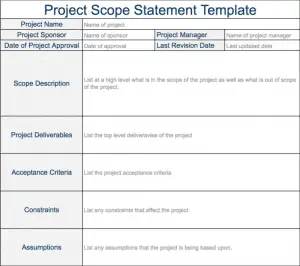If you’re working for someone else within an organization and you want approval to begin work on a new initiative (project or program) you’re going to need a business case.
The business case highlights the reasons for undertaking the initiative. Within corporations they aim to produce the maximum return on investment (ROI), and within government agencies they aim to ensure the best allocation of investment.
Business cases don’t have to be huge and go into every minutiae of the initiative. In fact, I would argue that where business cases are concerned, detail hinders comprehension, so they should be succinct, easy to understand, and highlight the key facts, with supporting evidence in an appendix.
Within corporations, projects and programs are typically undertaken for one of three reasons: to make money, to save money, or to move towards a strategic goal. Make sure you are clear which of these reasons your business case aligns to. Another thing to keep in mind is to ensure your business case is not at odds with company wide policy on ethics, HR, compliance etc. The four main aspects of the business case are detailed below.
1. Management Summary
Also known as The Executive Summary, this is a short section of the document that summarises the entire contents of the document in such a way that the reader can easily become acquainted with the entire business case and its recommendations. You can think of this section as being the elevator pitch for the initiative. Focus more on the business aspects of the initiative (costs, sales volumes, margins, unique selling points etc) rather than the details of the plan or product. The Management Summary is usually written at the end, once all the other parts of the document are completed.
2. Market Opportunity
A market opportunity is simply a newly identified need which is not currently being serviced by the competition. In order to show the market opportunity there are a number of topics you will need to cover:
2.1 The Problem
Here you describe the current pain of the customer, and describe the complex process by which the customer solves this problem today.
2.2 The Solution
Show how your solution improves the life of the customer. Show where the solution will sit in the marketplace relative to other products.
2.3 Timing
Use this section to answer the question, “why now?”. Describe the trends or recent changes within the sector you are addressing.
2.4 Market Sizing
Identify the customer you are targeting and then calculate the market size using both a top-down and bottom-up approach.
2.5 Competition
Provide a list of all the competitors and potential competitors and detail your competitive advantages.
2.6 Product
Provide details of what you intend to build or create. Include the product roadmap if applicable.
2.7 Financials
Highlight the revenue model, pricing, margins, sales model, distribution model, and the customer lifetime value. Your forecasts could be as simple as those shown in the following sales forecast diagram:
3. Plan
Here you explain the plan to achieve the benefits identified in the business case. You will need to define the major components of work, timescales, resources consumed etc. If you have the business side covered, and need to quickly create the plan, use the fast planning technique.
Obviously, the plan won’t be able to detail everything about the project, but it should contain enough detail to get approval, and detailed information as to how the first milestone will be reached.
4. Recommendations
Based on all the information already covered in the business case, outline your recommendation to your board or steering committee.
Summary
In summary, whether your seeking approval for a large program or small project, a business case doesn’t necessarily have to be complex. The four critical areas to cover in any business case are the management summary, the market opportunity, the plan, and finally your recommendation.











